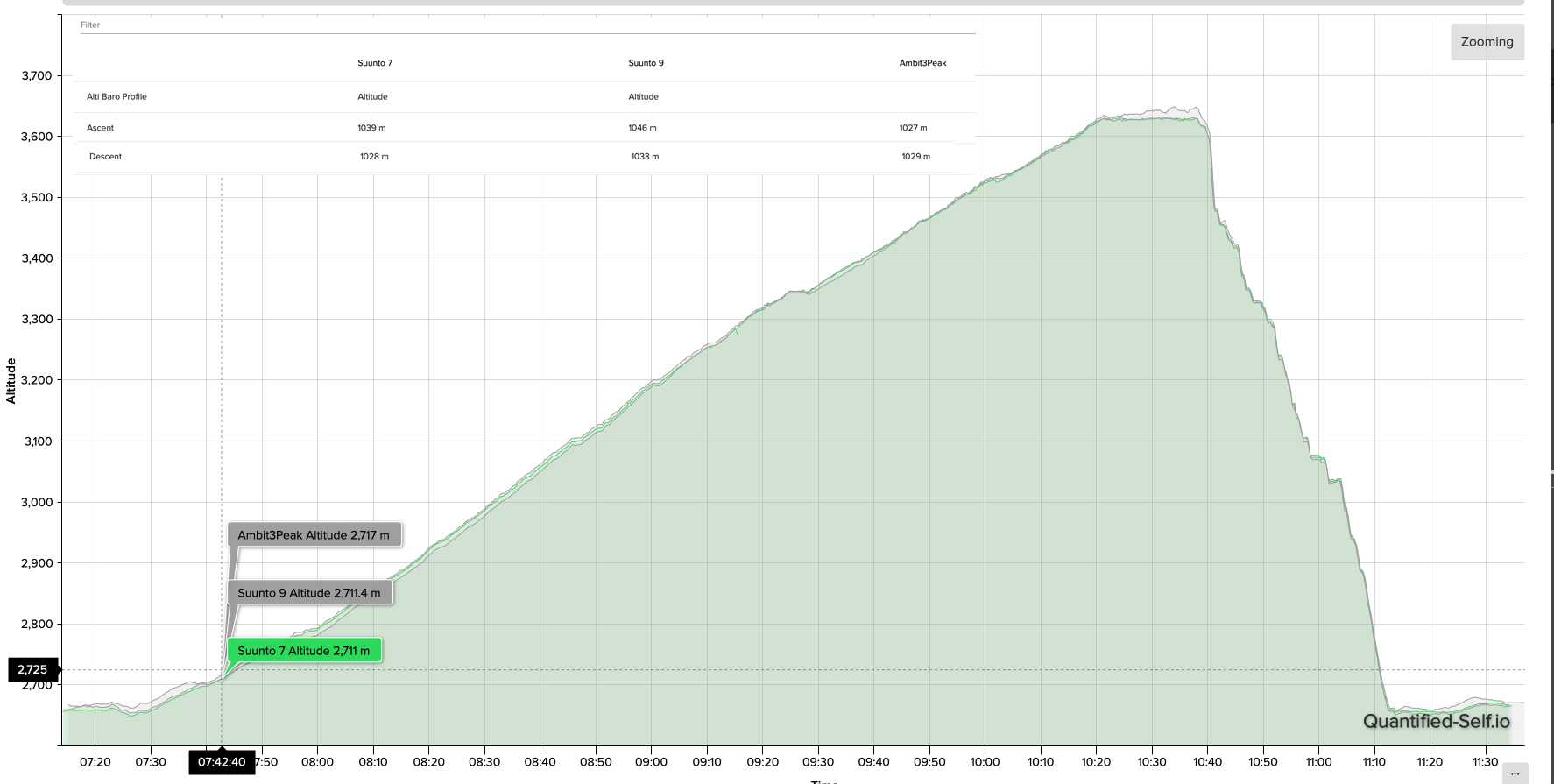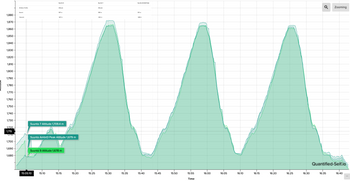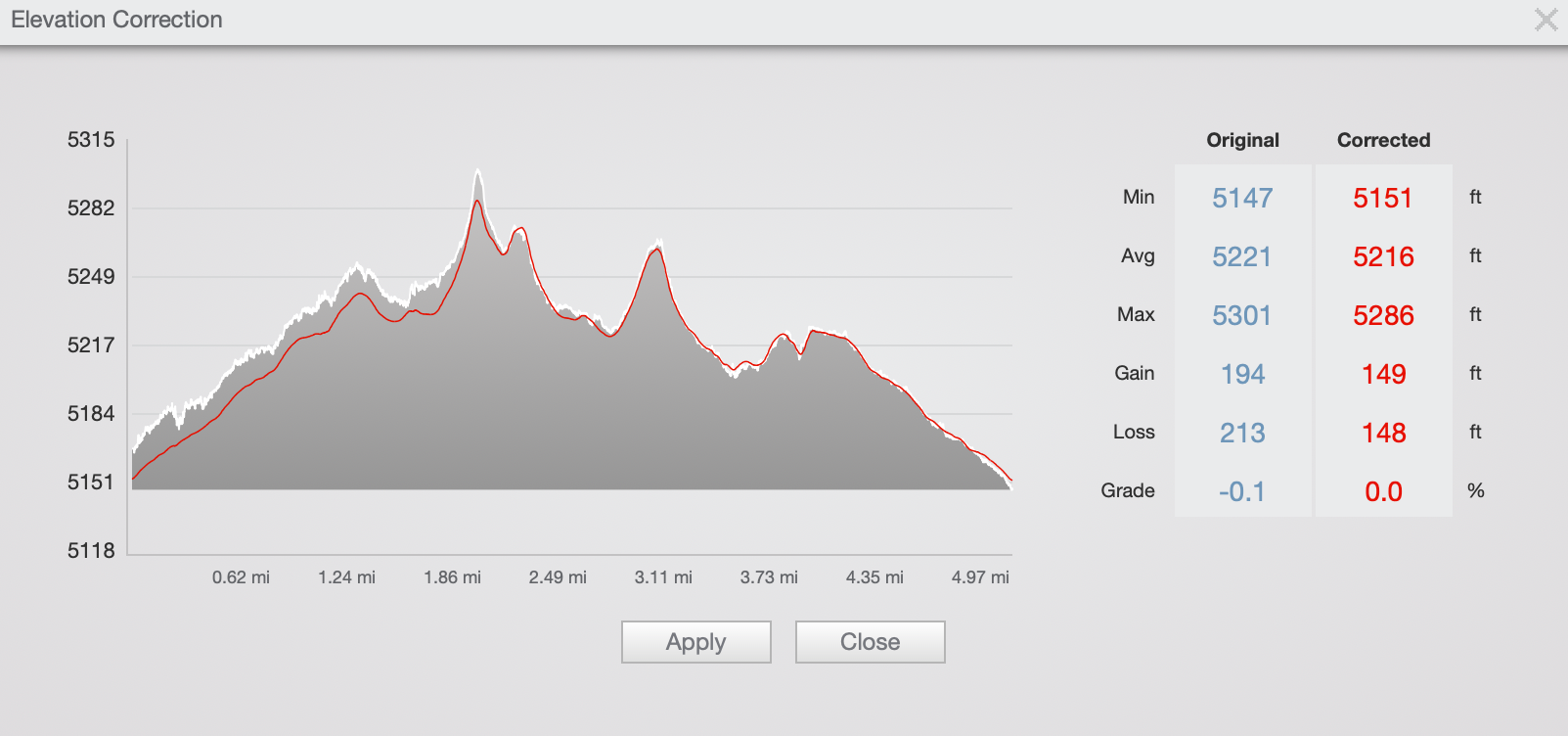Suunto 9 baro very low elevation gain vs other brands
-
My personal opinion is transparency goes a long way. @Dimitrios-Kanellopoulos explanations provide context and through that - understanding. It is clear total ascent values are tricky and it would be easier for Suunto to make every decision in favor of greater accumulated gain as this would make all of us feel better about our efforts. It appears they’ve instead chosen to make every decision with the goal of being as accurate as possible. They deserve credit for taking the harder road IMO.
-
@fazel said in Suunto 9 baro very low elevation gain vs other brands:
this would make all of us feel better about our efforts.
Unfortunately this is what “modern athletes” want from sport watches/platform … showing that they have it bigger

Very low percentage of “athletes” do sports for their own satisfaction nowadays
-
@sartoric isnt satisfaction goes bigger when you got, hmmm, bigger?
-
@TELE-HO said in Suunto 9 baro very low elevation gain vs other brands:
who proofs that Garmin is calculating the total ascent “more correct” in all different possible use cases?
The proof is very easy to get - just open the elevation profile generated from an activity and add all the climbs manually - that isn’t difficult at all. When I did that in the past I ignored all small elevation changes less than 3 meters, but even then Suunto 9 was often short on total ascent compared to its own elevation profile.
-
@sky-runner that is not proof. We could enable to the the hand flux of 1meter. We have a 3meter threshold and that’s it. That’s what most good services use such as runalyze as mentioned before.
We do data analysis here giving correct values.
I even went and explained with pics and what ? Did you see what all databases reported for this users examples with the different thresholds ?
While there is an literal obsession with this subject on your side , I am not sure why over and over I have to explain how things work.
Like Hellllloooo @sky-runner !
Did you even read the post with the thresholds , what other services use (digital elevation databases ) etc or what ? Came to say the same thing without helping ?
What’s up? Is this about you being right ? What’s the problem here ? Trying to enforce SUUNTO to do it the way you want it for your self ? Doesn’t Garmin do it as you like ?
I do t get you anymore. Sorry over and out.
-
@Dimitrios-Kanellopoulos said in Suunto 9 baro very low elevation gain vs other brands:
While there is an literal obsession with this subject on your side
Because Suunto 9 Baro total ascent calculation is really bad. It is an outlier when compared to all other watches, and that is something that really frustrated me, up to the point that I sold my year-and-half old S9B and moved to another watch.
Here is an example of what I mean. Here is the data that I collected by looking at Strava Flybys on activities recorded during 2019 and 2020 Bridle Trails Winter Trail Running Festival. This race is on moderate runnable rolling terrain. The festival races consist of multiple 5 mile loops - 1 to 6 loops depending on the distance. I looked at each activity on Strava and divided it on the number of loops. The table below shows total ascent in feet per loop, per device. All of these devices have barometers so I assumed the numbers on Strava match the ascent produced by each device, and I grouped ascents from all non-barometric devices in the bottom:
Suunto 9: 310, 295, 306, 310
Ambit 3 Peak: 406, 399, 377
Fenix 6: 366
Fenix 5: 368, 381, 360, 364, 338, 346, 347
Fenix 3: 373, 382, 367, 346
Fenix 2: 424
FR 935: 357, 351, 371, 365, 350
FR 920XT: 379
Non-Baro (Strava): 435, 313, 350, 326, 306, 302, 323, 335, 331, 346, 298, 321, 315, 330, 330, 328, 334, 307Don’t you agree that Suunto 9 is a clear outlier? Do you think that Suunto 9 results are correct and all others, including A3P, are wrong? I don’t understand why Suunto doesn’t see that as a problem.
I did similar comparisons for other races in which I participated and the results were similar - Suunto 9 is always an outlier on the low end. Since a lot of my running is on a rolling terrain like that, Suunto 9 had consistently low-balled my total ascent by 10-20%.
-
The glaring bit of evidence for me is if you compare S9B vs non Sony Suuntos. Either every other non Sony equipped Suunto is overstating the value or the S9 values are understated. Just ran a 10mi loop on rolling terrain w my cousin who has a Spartan Sport. Distances were exactly the same (which is super impressive in itself), he had over 100 ft more of climbing than me.
Outside of using ascent/altitude values in races to gage amount of climbs left, this really isn’t that big of a deal. Runalyze takes care of this problem and A3P vs S9B come in about the same after the correction is applied there.
-
@sky-runner as you wish to say and believe. But that is not correct as the same software that calculates ascent runs on all models.of SUUNTO the same way.
So changing one would exactly change all. The only added difference on the s9 is recent fused alti retry of multiple times late spring I think.
The same conversation with your previous profile still exists and I advice for the sake of all.of us to continue there, instead of "hijacking ". It gets too clustered to even someone to collect some proper feedback.
Kind reminder as well: If you think that the s9 (or anyone here) measures too low, it’s difficult from this forum to change all the stuff at suunto regarding ascent. So the reminder is about that in the end it’s us just fighting over our opinions and breaking our heads who is right or wrong.
-
@Dimitrios-Kanellopoulos said in Suunto 9 baro very low elevation gain vs other brands:
@sky-runner as you wish to say and believe. But that is not correct as the same software that calculates ascent runs on all models.of SUUNTO the same way.
Interesting, I thought it would differ based on firmware use. I stand corrected.
-
So, I’m supposed to run 21 miles of hilly trails on Saturday. Should I wear the Ambit3 Peak and the 9 Baro? Has anyone done a direct comparison?
-
@fazel
yes, before I gave my A3PS to a good friend and before (!) the S9B firmware has been updated to improve the alti summary if I remember correct.
please keep us updated! -
Should I wear the Ambit3 Peak and the 9 Baro?
Absolutely.
Has anyone done a direct comparison?
On those “21 miles of hilly trails”? Probably not.
I’m sure you can post a detailed analysis. Monday morning will do. Or by noon. Go easy on yourself.
-
@Fenr1r “Hilly” for me. I think we are doing just under three loops. The 50K is four full loops and 4900’ according to the Ambit when I wore it for the race.
https://www.strava.com/activities/1434473944/overview
Okay @Fenr1r @TELE-HO I’ll plan on wearing both watches.
-
Sorry all @stromdiddily @sky-runner @fazel @TELE-HO @Oktan @Dimitrios-Kanellopoulos , I would like this to end… I find NO differences between A3P, S7 and S9B. Here ya go, a SkiMo and a Trail Run.
SkiMo

Trail Run : A3P and S9B had FusedAlti kick in as you can see.

-
@Brad_Olwin me too. Thanks buddy. This is much appreciated
-
@Brad_Olwin the “issue” isn’t with bigger/distinguished climbs.
Same day, just over 5 mile route on rolling type terrain…22% difference in altitude.


-
@stromdiddily said in Suunto 9 baro very low elevation gain vs other brands:
@Brad_Olwin the “issue” isn’t with bigger/distinguished climbs.
Same day, just over 5 mile route on rolling type terrain…22% difference in altitude.
I often compare my altitude gain with corrections in TrainingPeaks, which I find highly accurate. I do not see this problem with my S9B as you can see below for runs with little altitude gain…I have dozens of these runs too if not hundreds. In fact, I find the S9B overestimates altitude gains on low altitude runs.


-
@Brad_Olwin your experience does not match my own. But I will leave this topic here.
May “missing” elevation be the worst of our problems in 2021

-
@stromdiddily said in Suunto 9 baro very low elevation gain vs other brands:
@Brad_Olwin your experience does not match my own. But I will leave this topic here.
May “missing” elevation be the worst of our problems in 2021

My point from your last post was the A3P may not be providing the “correct” altitude gain/loss for comparison. I agree that larger gains/losses typically are more accurate for me and the low altitude runs are substantially more variable. However, when comparing with correction algorithms I find the watches are overestimating more often than underestimating. Altitude is tough to get correct and my benchmarks when running or on skis is to compare the actual summit altitude with the watch, the watches are often quite close. As has been discussed before, clothing, wind, and I suspect arm movements affect the calculations and the sensor. In my experience none of the Suunto watches I have are different from each other. My only other comparison is with an Apple Watch and I found excellent agreement with gain/loss on Apple Watches compared to Suunto. I can post a large number of those comparisons too.
On a final note, many of you know I field test for Suunto. This is part of the field testing and many testers compare more than one brand. Based on what I know and what I have observed from my experience and others I don’t believe there is a consistent problem here with watches that have barometers. The GPS altitude watches are another story and I have a different opinion there.
-
@Brad_Olwin how are you running both watches? Pairing and unpairing in Suunto App? I’m still likely to run with both watches to satisfy my own curiosity. Nice “hill” repeats
